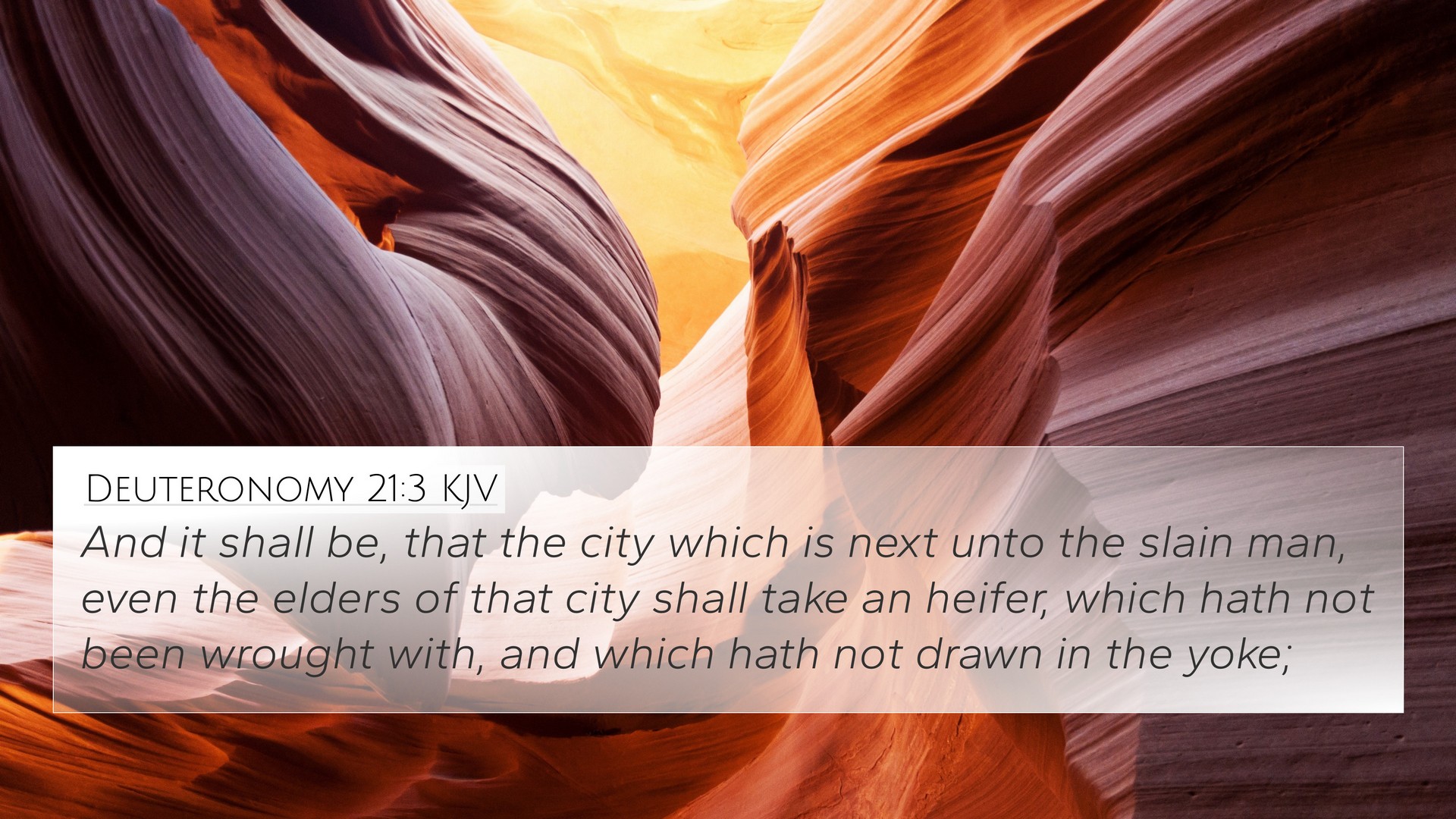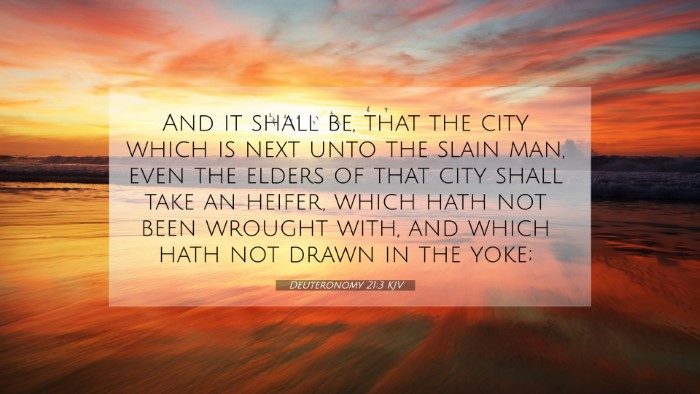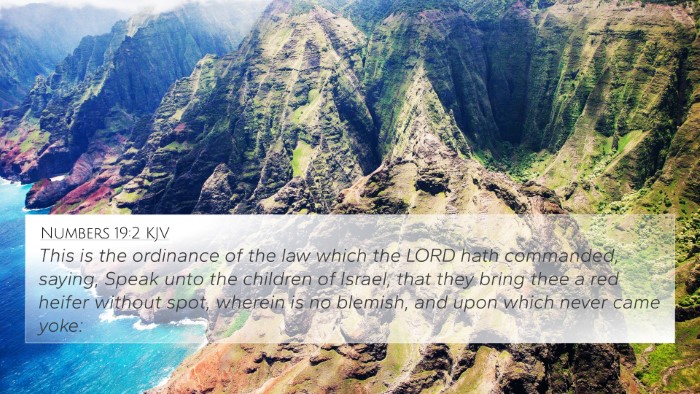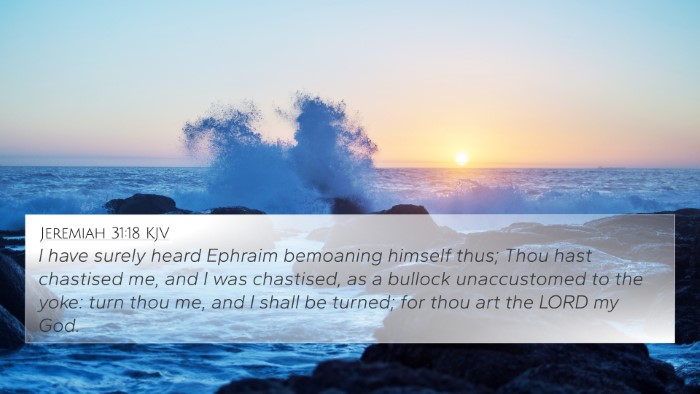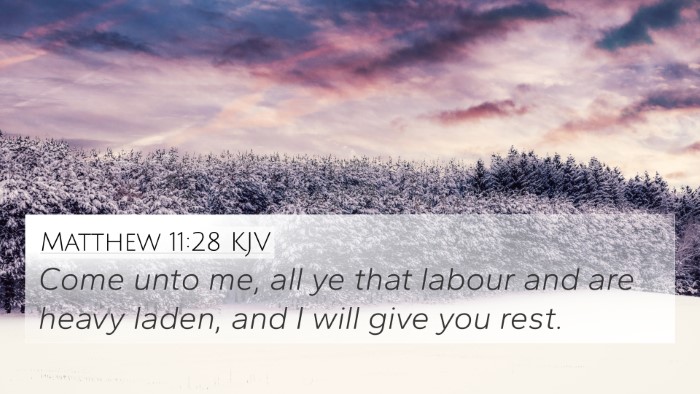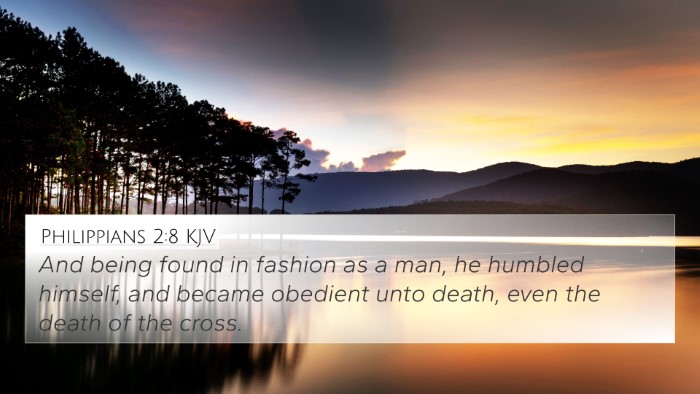Understanding Deuteronomy 21:3
Verse Context: Deuteronomy 21:3 states: "And the elders of that city shall bring down the heifer unto a rough valley, which is neither eared nor sown, and shall strike off the heifer’s neck there in the valley."
Summary: This verse is part of a legal procedure concerning a situation where a murder occurs in a city, and the perpetrator is unknown. The elders of the city would perform a ritual with a heifer to atone for the innocent blood shed, demonstrating the community's guilt and their commitment to justice.
Interpretive Insights
This verse can be interpreted through various lenses provided by historical and theological commentaries. Notable insights include:
- Matthew Henry: Henry highlights the importance of community guilt and the seriousness of bloodshed. He emphasizes that the ritual serves as a means of ensuring that God’s justice is recognized and upheld.
- Albert Barnes: Barnes focuses on the symbolism of the heifer and the valley, noting that the location—a desolate place—reflects the gravity of the act and the need for God’s mercy. He also discusses the communal responsibility for crime that occurs within its borders.
- Adam Clarke: Clarke provides a detailed exposition of the ritual, explaining its implications for the Israelite community. He connects this practice to the need for repentance and divine forgiveness, portraying it as a method by which the community seeks to restore right relations with God.
Cross-References and Thematic Connections
To deepen the understanding of this verse, consider the following Bible verse cross-references, which highlight connections between Bible verses related to justice, community sin, and atonement:
- Exodus 23:7: "Keep you far from a false matter; and the innocent and righteous slay thou not: for I will not justify the wicked."
- Numbers 35:33: "So ye shall not pollute the land wherein ye are: for blood it defileth the land: and the land cannot be cleansed of the blood that is shed therein, but by the blood of him that shed it."
- Matthew 5:21-22: Jesus teaching on murder connects the Old Testament laws to the higher standard of righteousness in the New Covenant.
- Hebrews 9:22: "And almost all things are by the law purged with blood; and without shedding of blood is no remission." This verse highlights the principle of atonement, closely tied to the practice in Deuteronomy.
- Genesis 4:10: The context of Cain’s murder and God’s declaration reflects the significance of bloodshed and the call for accountability.
- Romans 15:4: "For whatsoever was written aforetime was written for our learning, that we through patience and comfort of the scriptures might have hope." This indicates the continuity of themes throughout scripture.
- 1 John 1:9: As a New Testament reference, this verse on confession emphasizes the community’s need for forgiveness.
Thematic Bible Verse Connections
In studying Deuteronomy 21:3, we find important thematic connections:
- Justice and Accountability: The act of bringing the heifer exemplifies the community's accountability for the actions that occur within their boundaries.
- Community and Repentance: This ritual is a collective act, reinforcing the communal aspect of Israelite faith and the collective nature of sin and atonement.
- The Role of Leadership: The elders play a crucial role in mediating this ritual, reflecting the importance of wise leadership in spiritual matters.
Practical Applications and Study Tools
For those engaging in Bible cross-reference study, consider these methods and tools:
- Bible Concordance: Use a concordance to locate key terms and understand their use throughout scripture.
- Bible Cross-Reference Guide: Employ thematic cross-reference guides that connect similar topics across the Bible.
- Cross-Referencing Bible Study Methods: Engage in comparative studies that examine similar themes across both the Old and New Testaments.
Conclusion
Deuteronomy 21:3 serves as a profound reflection on the principles of justice, community responsibility, and the seriousness of sin. Through cross-referencing Biblical texts and exploring inter-Biblical dialogues, one can grasp the full significance of this verse and its implications for a faithful life. By understanding the structure of this law, believers can appreciate God's desire for justice and reconciliation within their communities.
